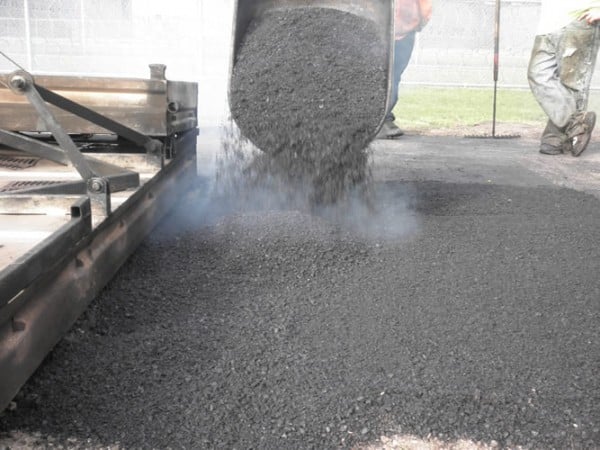Experience the Difference: Hot Mix Asphalt Paving for Regrading Projects
Unlocking the Tricks of Hot Mix Asphalt Innovation
Checking out the midsts of hot mix asphalt innovation discovers a world where accurate formulas and precise processes converge to shape our roadways and framework. The blend of accumulations, binders, and fillers isn't simply a building task but a strategic orchestration of durability and efficiency. As we peer right into the complex dance of components, a tapestry of strength and sustainability unravels. What lies under this surface area of asphaltic mastery, and what tricks wait to be unveiled in the world of leading advancements?
Significance of Warm Mix Asphalt
Hot Mix Asphalt plays an important role in contemporary infrastructure advancement as a result of its sturdiness and cost-effectiveness. As one of the most frequently used paving product for roads, freeways, and parking great deals, Warm Mix Asphalt provides a variety of advantages that contribute to its value in building and construction projects. One vital benefit is its capacity to endure rush hour loads and extreme climate condition, offering a durable and dependable surface for transportation networks. Additionally, Hot Mix Asphalt is economical in both first building and construction and long-term maintenance, making it a preferred option for lots of facilities tasks.
The resilience of Warm Mix Asphalt stems from its structure, which includes accumulations, binder, and filler materials that are meticulously chosen and mixed to fulfill certain performance demands. In general, the relevance of Warm Mix Asphalt in infrastructure advancement can not be understated, as it proceeds to be a cornerstone of contemporary construction methods.
Components of Asphalt Mixes
The make-up of asphalt blends is composed of very carefully chosen accumulations, binder, and filler materials that are vital for attaining specific performance requirements. Aggregates are the main element of asphalt blends, giving toughness and security. The binder, typically bitumen or asphalt cement, holds the aggregates together and offers versatility and toughness to the mix.
The mix and percentage of these elements play a substantial duty in establishing the top quality and efficiency of the asphalt mix. Designers very carefully create the mix to satisfy certain demands, thinking about elements like traffic volume, climate problems, and sidewalk life-span. Appropriate option and harmonizing of accumulations, binder, and fillers are necessary for producing long lasting, resilient asphalt pavements.
Mixing and Production Strategies

When the accumulations are chosen, the binder, commonly asphalt concrete, is included in bind the products together. The binder's high quality and quantity considerably affect the mix's adaptability, toughness, and resistance to environmental factors. In addition, fillers like moisturized lime or Rose city cement may be incorporated to boost certain attributes of the asphalt mix, such as its workability or wetness resistance.
During manufacturing, the accumulations and binder are heated, generally between 250-325 ° F(121-163 ° C ), to promote blending and guarantee proper coating of the accumulations. The mixing process must be detailed to attain a homogeneous mixture that advertises the preferred performance features of the asphalt. Different techniques, such as set mixing or drum blending, are utilized to attain high-quality and regular asphalt mixes for building and construction jobs.
Factors Influencing Asphalt Performance
Variables affecting asphalt performance include an array of variables that affect the sturdiness, long life, and general quality of asphalt sidewalks. One crucial element is the top quality of products used in the asphalt mix.

Environmental conditions also affect asphalt efficiency. Temperature variations, dampness infiltration, and web traffic lots can all impact the architectural integrity of the pavement. Layout factors to consider, such as sidewalk thickness and water drainage, are necessary in guaranteeing the long-term performance of the asphalt pavement. By very carefully considering these variables, designers and specialists can enhance asphalt performance and improve the solution life of pavements.
Lasting Practices in Asphalt Innovation
:max_bytes(150000):strip_icc()/asphalt-worker-134249388-58cdf96f5f9b581d723f2f33.jpg)
WMA enables for the manufacturing and placement of asphalt mixes at lower temperatures compared to typical hot-mix asphalt, resulting in reduced energy usage and greenhouse gas Your Domain Name discharges. The use of permeable asphalt mixes can help alleviate stormwater overflow issues by enabling water to infiltrate via the sidewalk and right into the ground, advertising all-natural water filtering and recharge procedures.
Verdict
To conclude, warm mix asphalt innovation plays an essential duty in modern-day infrastructure growth due to its longevity and cost-effectiveness. By meticulously stabilizing parts, utilizing proper blending techniques, and considering different variables, engineers can develop premium asphalt blends that stand up to rush hour lots and rough climate conditions. Accepting lasting techniques, such as utilizing recycled products and warm-mix modern technologies, better improves the environmental kindness of asphalt modern technology.
Mixing and manufacturing strategies in hot mix asphalt innovation involve the accurate combination and processing of accumulations, binder, and fillers to create a high-performance and resilient asphalt mix.Aspects affecting asphalt performance include an array of variables that impact the sturdiness, durability, and overall top quality of asphalt sidewalks. Lasting practices in asphalt technology encompass various initiatives aimed at minimizing the ecological effect of asphalt production and paving processes. By incorporating redeemed asphalt pavement (RAP) and recycled asphalt tiles (RAS) into new asphalt his comment is here blends, the sector can dramatically minimize the intake of raw materials and energy, while likewise lowering land fill waste.
WMA allows for the manufacturing and positioning of asphalt mixes at lower temperature levels contrasted to typical hot-mix asphalt, resulting in lowered energy intake and greenhouse gas exhausts.